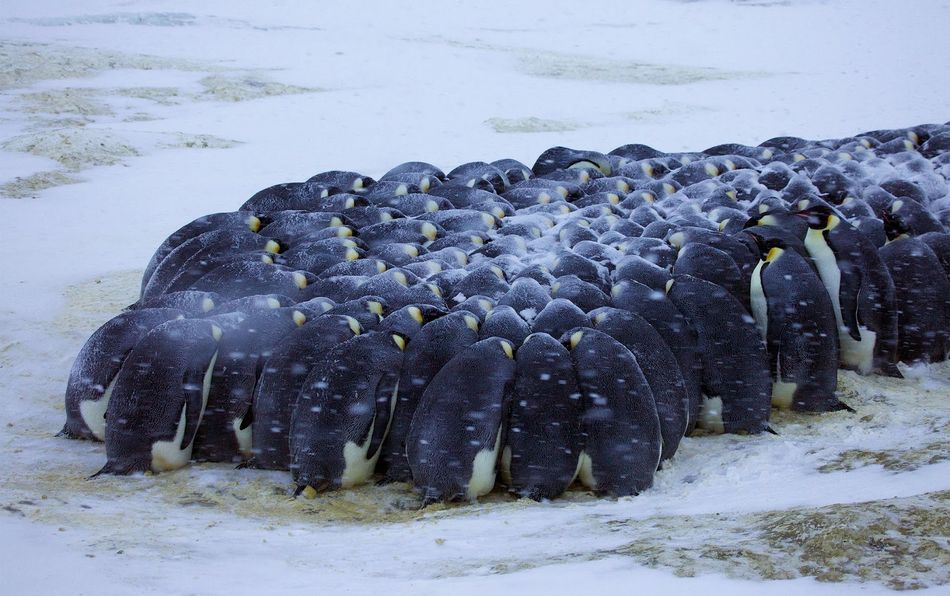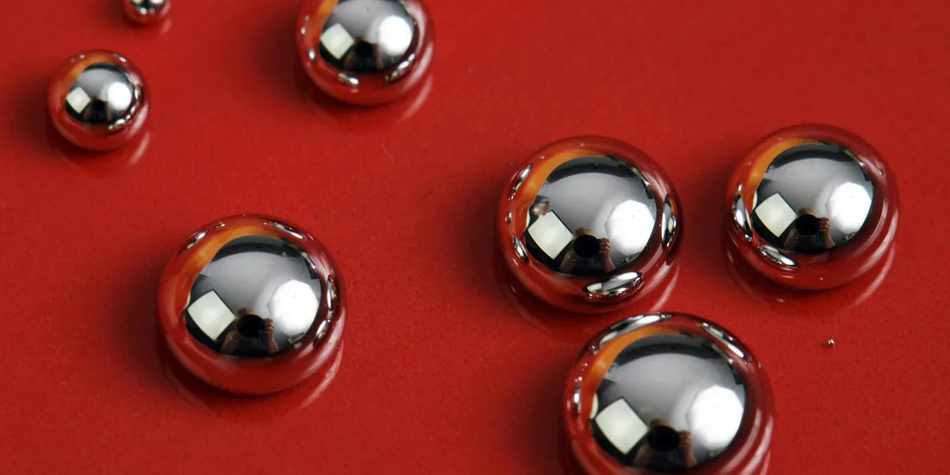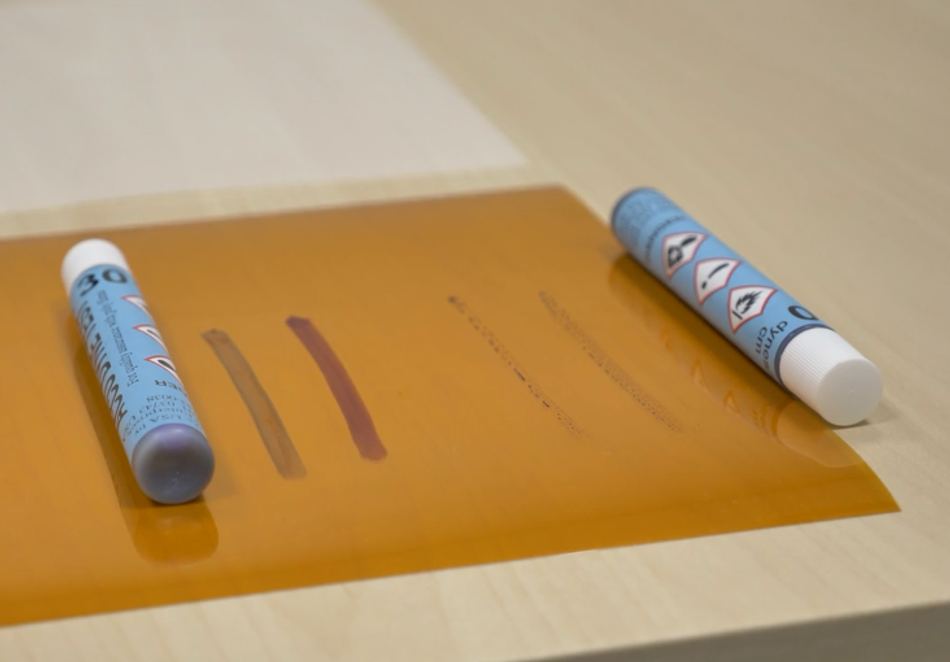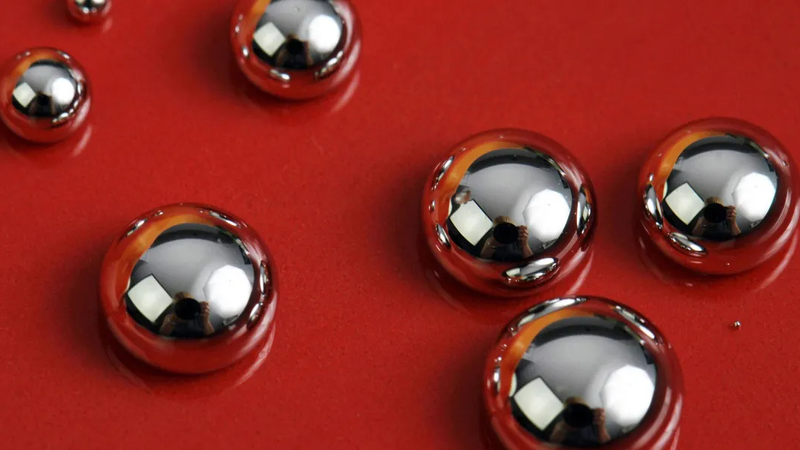What is Surface Energy?
In the world of printed electronics, surface energy often comes up around the interactions of materials, specifically when we’re printing conductive inks onto various surfaces (substrates).
This article was first published on
www.voltera.ioSurface energy is a fundamental topic with implications in nearly every field of engineering, and frankly, it can be a bit mind-boggling. In the world of printed electronics, surface energy often comes up around the interactions of materials, specifically when we’re printing conductive inks onto various surfaces (substrates). While there are several factors that determine if an ink and a substrate will work together, surface energy plays its own very specific role. Let’s dig a bit deeper into how surface energy works, and more importantly, how it can impact your work.
If you use inkjet technology, then the surface energy rating of your materials is a key determinant in whether or not an ink will be compatible with a substrate. Due to their low viscosity, inkjet inks are significantly impacted by surface energy. But, when you read the surface tension rating on your ink, how does it translate into the compatibility of your materials?
If you’re using low-viscosity inkjet inks, then read on, because surface energy has a big impact on your materials' compatibility.
If you’re using high-viscosity screen-printable inks, surface energy isn’t really a concern for you, but there are several other factors to consider when you’re trying to figure out whether an ink and substrate are compatible. Stay tuned for a future blog post covering this!
Sci-Snack
Viscosity is the measure of a fluid’s resistance to flow, due to the internal friction of the fluid. Low-viscosity inks, like inkjet inks, have very little friction between the molecules of the ink, so the match or mismatch of surface energy has a significant impact on how your ink and substrate interact.
High-viscosity screen-printable inks have a lot of friction between the molecules in the ink. Molecular friction helps these inks hold their shape and stay where you put them, regardless of the surface energy of the substrate to which they are applied.
What is surface energy and how does it work?
Surface area is the measure of the total area that the surface of the object or liquid occupies.
Surface energy is the amount of energy required to increase the surface area of a material. It applies to liquids and solids.
In other words, it’s the energy required to increase the space between the molecules. The surface energy of your ink and the surface energy of your substrate — and how those two energies interact — will dictate if your ink spreads out on the substrate, forms nice contained traces, or beads up like water on a non-stick pan.
Surface energy manifests itself in surface tension — when a liquid minimizes its surface area due to the cohesive forces between the molecules. Surface tension occurs in liquids only, never gasses or solids. Surface tension is calculated by measuring the surface energy over a surface area.
This concept might seem complex, but if you look around, you’ll see examples of it everywhere in your day-to-day life. Right now, there’s a viral trend all over TikTok that demonstrates the cohesive forces between water molecules. You’d recognize it as “The Water Cup Challenge”.
In the water cup challenge, players take turns adding drops of water to a full cup. The objective is to gradually add water to the cup, and reach the threshold of surface tension without the water overflowing. The literal tension of the players builds as the surface tension of the water reaches its threshold, mushrooming above the rim of the cup, yet miraculously holding itself together. Eventually the water overflows, and the loser who poured that critical last drop gets thrown into a swimming pool. Fun times.
Sci-Snack
- Surface area is the measurement of the total area that the surface of the object or liquid occupies.
- Surface energy is the amount of energy required to increase the surface area of a material. It applies to liquids and solids.
- Surface tension is when a liquid minimizes its surface area due to the cohesive forces between the molecules. Surface tension occurs in liquids only, never gasses or solids.
To demonstrate the concept of surface tension at the molecular level, we’re going to take a look at penguins. When it’s really cold out, penguins form a huddle to share body heat. Think of any material as a penguin huddle and the penguins are molecules. The penguins on the outer edge of the huddle — the ones at the surface — are very tightly packed together, trying to preserve heat. You can imagine that these surface penguins would be pretty difficult to remove or push around. The desire of the penguins to stay close together is like the surface tension or surface energy between molecules or atoms.
If it’s a warm day, the penguins spread out, increasing the surface area they occupy.

If it’s cold outside, the penguins huddle together tightly to share body heat, reducing the surface area they occupy.

Sci-Snack
If a material has high surface energy, that means it’s going to take a lot of energy to change the surface area of the material, so it’s going to be resistant to change. Materials with high surface energy include glass, ceramic, and most metals (and cold penguins).
If a material has low surface energy, that means it will change its surface area relatively easily. Materials with low surface energy include soft low-density plastics like vinyl, polystyrene, and polyethylene.
Liquid mercury, as another example, has incredibly high surface tension. When poured onto a surface, the liquid mercury pulls itself together into a perfect sphere. A sphere is the easiest way for a substance to minimize its surface area.

In the iconic film Terminator 2, the terminator is smashed to pieces, and then liquifies into molten metal and pulls back together into the shape of a man. This is a great science-fiction demonstration of surface tension.

Each material has its own surface energy rating based on the chemical makeup of the material. This applies to liquids (inks) as well as solids (substrates).
When you deposit ink onto a substrate, the interaction between the ink and the substrate’s respective surface energies can result in changes to the shape of your traces. This is where you’ll see your ink do one of three things — become very runny and flat, contain itself properly, or bead up.
You can determine the difference in surface energies between an ink and a substrate by measuring the contact angle — the angle of the ink droplet relative to the substrate. This angle determines if a liquid is spreading, wetting well, or not wetting at all.

Matching the surface energies of your ink and substrate
The shape-quality of your traces depends on how well you’ve matched the surface energy of your ink and substrate. If the surface energies of these materials are relatively similar, then the ink and substrate will interact compatibly. You’ll get nice traces that contain themselves and stay where you put them.
If the surface energies of your ink and substrate are quite different, they are incompatibly matched. Surface energy forces are going to change the shape of the ink and you’ll end up with traces that either bead up, or spread out too much.

Inks have different surface tension ratings, and substrates have different surface energy ratings, which influence how these materials interact. The objective is to find a match between the surface energy of the substrate and the surface tension of the ink, resulting in traces that make a nice domed shape and hold together properly:
Take a look at how inks with surface tension ratings of 30 and 60 interact with different substrates.
First, let’s take a look at different inks on polyimide. The ink on the left has a low surface tension rating of 30, and it wets and spreads out a bit too much. The ink on the right has a high surface tension rating of 60, and it beads. Based on how the inks perform, we can deduce that the surface energy of the polyimide substrate is somewhere in between 30 and 60.

In this example, the same inks are applied to a sheet of PET with silica flakes to promote adhesion. The ink with a surface tension of 30 wets out significantly, flooding the substrate. The ink with a surface tension of 60 still beads a bit, but it’s closer to the kind of match you’d want for traces.

Now look at how these inks perform on the same PET, but without the adhesion promoter. The ink with a surface tension of 30 wets out a bit. The ink with a surface tension of 60 beads significantly.

Next, we tried an ink with a surface tension rating of 44, in between our bookends of 30 and 60. Check out how this one interacts with the three different substrates:



Based on the way the 44 dyne pen behaves, what does this tell you about the surface energy of each of the substrates?
So what does this mean for choosing an inkjet ink?
If your surface energies don’t match, it can be very challenging to get a good quality print. Unfortunately, every substrate is different, so prepare yourself for a lot of trial and error. There are some options to modify the surface energy of your substrate, if you’re willing to roll up your sleeves and do some lab work. We consulted with a friend, Krishna Iyer, Optical Systems Engineer at University of Waterloo's Sensors and Integrated Microsystems Laboratory, to learn more about surface energy modification:
- Surface treatments — substrates can be treated to help match the surface energy of the ink. Surface treatments include surfactants (anionic, cationic, zwitterionic, or amphoteric), as well as plasma, corona, or acid/alkaline surface treatments.
- Temperature — temperature doesn’t directly affect surface energy, but it does affect viscosity. By controlling the processing temperature, you can have a significant impact on the coverage of your ink or coating material.
- Surface coatings — you can add coatings to affect the surface energy of your substrate while still preserving the mechanical properties. For example, coating PET with an adhesion promoter, or coating a surface with Teflon.
- Surface preparation — there are inexpensive, accessible, non-chemical approaches to making a surface more favorable for wetting. For example, a surface with higher roughness increases the surface area and improves wetting without affecting the surface energy, but this can have the opposite effect if roughness is too high (see Wenzel effects).
With higher viscosity screen printing inks, like those used with NOVA, the internal friction of the ink makes it less impacted by surface energy effects. This enables you to print on a much wider variety of materials without changing your formulation, so you may want to consider switching technologies to avoid the headache.
